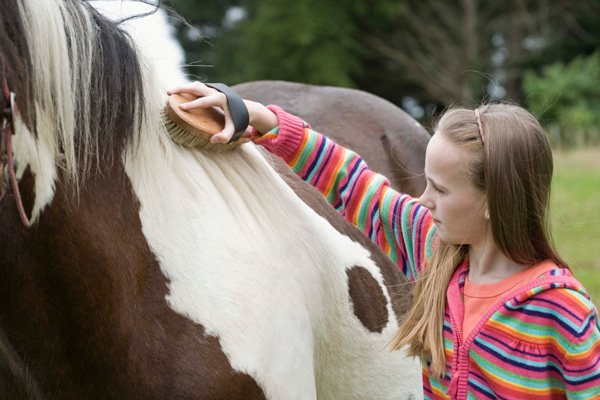
Toe cracks can not only be unsightly, but can compromise the soundness of your horse. The following information from North Carolina State University on managing toe cracks can help you understand this condition.
Causes of toe cracks in horses:
- Trauma to the coronet (usually unilateral)
- Too much exposure to wet pasture and/or mud
- Too much exposure to fescue pasture
- Irregular shoeing or trimming intervals
- Allowing flaring of the toes and walls to occur
Hoof Management
Owners should manage the hoof environment before any hoof or shoeing alterations. If hoof management doesn’t change, hoof treatments can not be successful.
- The horse should be maintained in as dry an environment as possible. No turnout during wet times. Keep the horse off dew-wet pasture. Consider a clean pine shavings stall as primary “home” with turnout in late afternoon and in about 10 p.m., then could turn out about 8 a.m. for a few hours. Fescue pasture maybe a hindrance to decent hoof health.
- A small paddock with packed sand can be a turnout area for such a horse in wet times. Make sure hay is fed on a platform that can be swept to avoid sand colic.
- Encourage daily exercise, either in-hand ridden, to help maintain health.
- Keep weight reasonable with a body score no greater than 6.
Shoeing Treatment
- Consider as much heel support as the farrier dares.
- Consider adding frog support.
- Consider at least setting the shoe back to a straight line drawn from the top 1/3 of hoof to the baring surface.
- Consider setting breakover back from that point.
Hoof Treatment
- Without causing any blood, relieve the firm horn from both sides of the cracks in a V-shape. The long point of V is about 3/8″ to 1/2″ on either side of the crack along the coronet.
Goal: To shave off horn to a point just below the crack line and have no crack at the coronet. It may take 2 or 3 “shavings” done 1 to 2 weeks apart to accomplish. If you do get a bead of blood or more, wrap for one day with aqueous-based antibiotic cream.
- Re-check site each shoeing to pare away any abnormal hard horn.
- Keep lanolin based hoof ointment rubbed into coronet band to keep coronet soft.
- No caustic treatments! That only makes a heavier scar.


